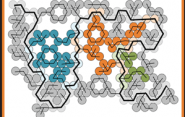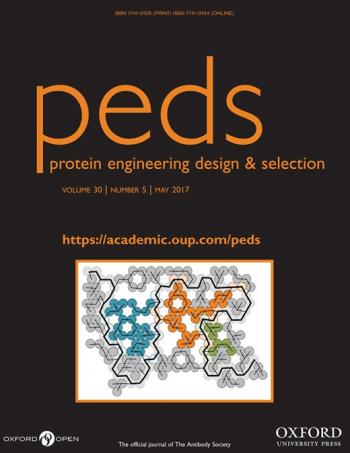Rebuilding Proteins to Better Understand Them

The science of protein design seeks to develop new protein-based materials that do not exist in nature, and shows great promise for new vaccines, energy production and storage, and other applications.
 Before researchers can reliably make new protein-based materials, however, they need to fully understand the incredibly complex structures of existing proteins. That includes being able to take apart natural proteins and correctly reassemble them. One of the most efficient ways for doing this is to use computer modeling and simulations.
Before researchers can reliably make new protein-based materials, however, they need to fully understand the incredibly complex structures of existing proteins. That includes being able to take apart natural proteins and correctly reassemble them. One of the most efficient ways for doing this is to use computer modeling and simulations.
Researchers at Yale have developed a computational model that treats a protein like a three-dimensional puzzle. The simple model includes only steric atomic interactions - that is, repulsive interactions that prevent atoms from overlapping each other. The model can predict with high accuracy how side chains of amino acids fit back into place after they are removed from a protein. By taking a simplified approach, this model also provides a clearer picture of the dominant interactions that determine protein structure. These findings are published in the May 2017 issue of Protein Engineering, Design, & Selection and are the subject of that journal’s cover.
Previously, the same researchers had successfully used this computational model to predict how single amino acids fit back into place after they are removed from a protein. For the new study, they used the same model to look at “collective repacking” – that is, they took many amino acids out of a protein at once, and attempted to put them back into place.
“Collective repacking is a much more expensive computational task,” said one of the study’s authors, Corey O’Hern, associate professor of mechanical engineering & materials science, applied physics, and physics. “You have to try a lot more possibilities compared to single amino acid repacking. Further, the fact that single and collective repacking gives the same result shows that there is a unique low-energy protein conformation.”
The researchers’ computations, though, take a simpler approach than many widely used computational models for repacking protein cores. Other models, such as the software program Rosetta, take into account many types of interactions, such as electrostatics, Van der Waals’, and hydrogen bonding. Although predictions from these other models are also relatively accurate for repacking protein cores, O’Hern notes that it is unclear which of the possible interactions is dominant in determining side chain conformations.
“We developed a new model for proteins, where we only include steric atomic interactions and realistic stereochemistry, and we obtain results that are as good if not better than state-of-the art protein modeling software,” said O’Hern, whose lab collaborated on the research with Lynne Regan, professor of molecular biophysics and biochemistry and chemistry.
“The nice thing about our model is that it treats protein structure like a geometric puzzle that you just have to put back together,” O’Hern said.
The study’s other authors are Jennifer Gaines and Alejandro Virrueta of Yale, David Buch, an undergraduate at West Virginia University, and Sarel Fleishman of the Weizmann Institute of Science.

